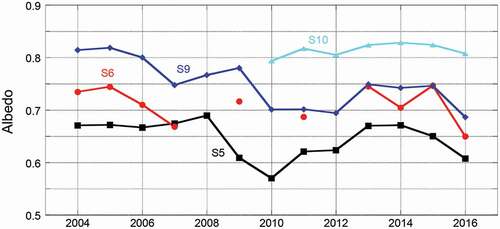Figures & data
Figure 1. MODIS image of the Kangerlussuaq area, west Greenland. Automatic weather station (AWS) locations given as white circles. Photos demonstrate typical summer conditions at the four AWS locations
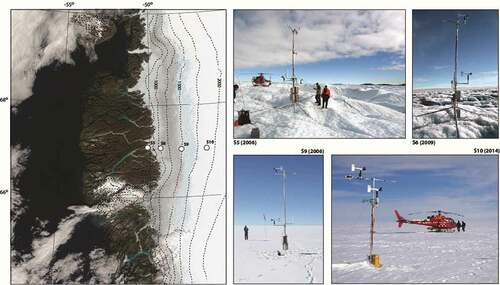
Table 1. Climatology at the automatic weather stations (AWS) locations for the period August 2003–August 2016. The wind directional constancy is calculated as the ratio of the magnitudes of the average vector and absolute wind speed (from Smeets et al. Citation2018)
Table 2. Sensor type and accuracy of observed variables for all automatic weather stations (AWS) (condensed from Smeets et al. Citation2018)
Figure 2. Modeled versus observed surface temperature (°C, hourly values) for automatic weather station (AWS) locations (A) S5, (B) S6, (C) S9, and (D) S10. Mean bias dT and RMSE given in the lower right corner of each panel
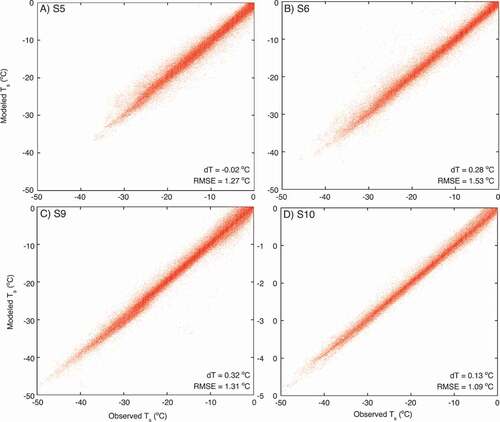
Figure 3. (A) Cumulative ice ablation in m w.e. for stations S5 and S6. Model data in solid lines (S5 in red, S6 in blue). Annual stake observations in squares (S5) and circles (S6). Note that modeled ablation for S6 was aligned to the stake data in September 2008, 2010, and 2012. (B) Annual ice ablation, model versus stake observations (in m w.e.) for S5 and S6
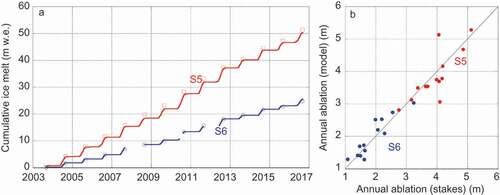
Figure 4. Monthly mean fluxes of net shortwave radiation (blue), net longwave radiation (red), sensible heat (orange), latent heat (green), ground heat (black), and melt (pink). From top to bottom: S5, S6, S9, and S10. The vertical axes are all at the same scale
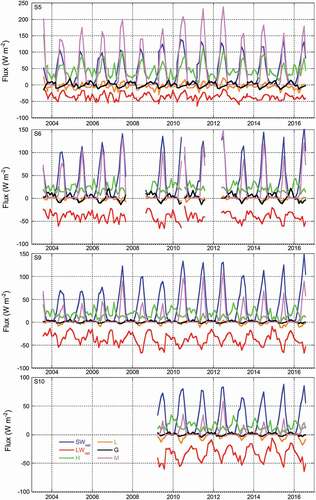
Figure 5. Hourly values of surface energy balance (SEB) fluxes (left vertical axis) and horizontal wind speed (right vertical axis) at S5 during a six-day period in August 2010
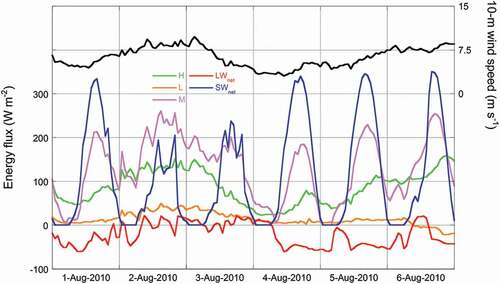
Table 3. Correlation coefficients (R) between June, July, August (JJA) mean melt flux and other surface energy balance (SEB) components
Table 4. Trends in surface energy budget components, expressed in W m−2 y−1, determined for the period 2003–2016. Trends significant at the p < 0.10 level are shown in bold
Figure 6. Energy fluxes (W m−2) averaged over June, July, August (JJA), sorted by JJA-mean melt flux. Years on horizontal axes
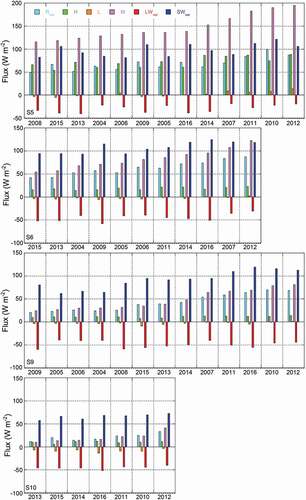
Figure 7. Mean June, July, August (JJA) albedo as a function of mean JJA melt flux (in W m−2). R2 denotes the correlation coefficient
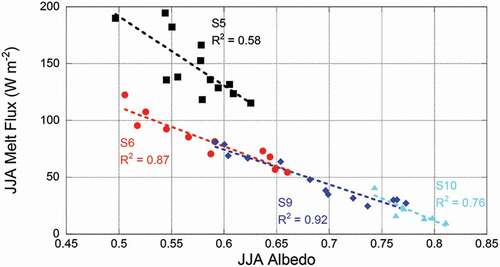
Figure 8. Total melt energy for each automatic weather stations (AWS) location, in MJ m−2. June, July, August (JJA) totals in dashed lines with open circles. Annual totals in solid lines with closed circles. S5 in black, S6 in red, S9 in blue, and S10 in light blue
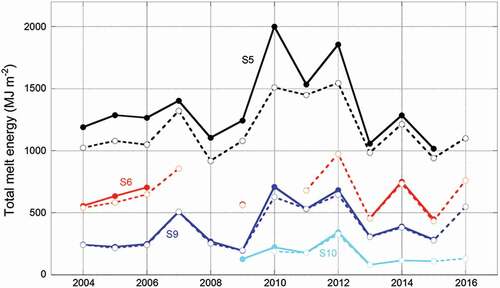
Figure 9. Albedo, computed from the mean incoming and reflected shortwave fluxes of each mass balance year (September 1, Y-1, to August 31, Y, where the year Y is given on the horizontal axis)
